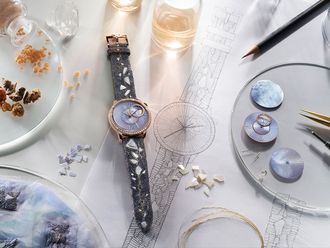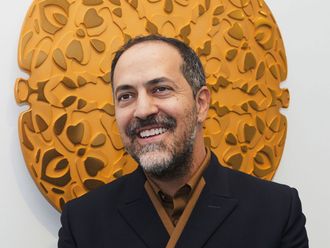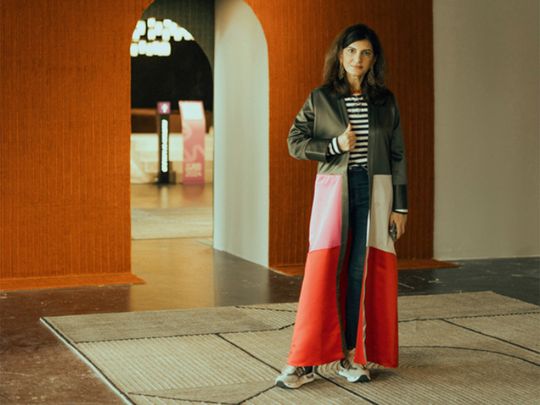
Beirut, a city that has long been a symbol of resilience and artistic heritage, hosted a dynamic four-day immersive design experience from May 23rd to 26th, 2024. ‘We Design Beirut’—founded by Lebanese design and media PR Mariana Wehbe in partnership with industrial designer Samer Alameen and visual communications studio Bananamonkey—offered a diverse programme that combined product design, interiors, functional art and architecture with artisanal craft and heritage. Presented through a series of designer showcases, exhibitions, open -studios, talks and workshops spread across the capital city, the event highlighted the very best of Lebanon’s design innovations and the talent behind them.
The programme centred on three main showcases, based on pillars of ‘Preservation’, ‘Empowerment’ and ‘Sustainability’. Touted as Beirut’s new design week, each theme provided access to some of the most impressive and culturally important monuments that Beirut has to offer, such as Villa Audi, Abroyan Factory, the Interdesign Building, and The Royal Cinema through a string of creative exhibits.
‘We Design Beirut’ is an example of the power of design to transcend borders and unite people through creativity. After the 2020 Beirut Explosion, it was the civil society that came together to re-build their city, had it not been for the solid and impressive foundation of design talent; architects, interior designers, artisans, creatives, and visionaries in coordination with NGOs and volunteers in all capacities, the city could not possibly have come back to life with such speed, grace, and elegance.
At the forefront of the rebuilding efforts is the co-founder of this event Mariana Wehbe. Wehbe has been credited with some of the most ambitious contracts the region has seen. Her ability to identify and harness talent, envision and produce world-class projects has earned her a glowing reputation as an authority on brand development, event management and production in the region.
“We get on with life even though things around might be crumbling. We want to remind the world that there is so much more to our people than the tragedies you witness in the news,” says Wehbe, who now resides between Abu Dhabi and Beirut. “We are people full of joy, laughter, creativity and a passion for beauty,” she adds.
When questioned on her motivations behind ‘We Design Beirut’ she tells The Kurator, “Lebanon has been a major hub for design since the early 1940s, and we felt it was crucial to expose these talents and the unique creativity of Lebanon to the world. This in turn will create networks and opportunities for the local creatives, artisans and designers and will provide them with greater -chances of continued growth and business sustainability. Throughout history, economic and political strife’s effect on the design scene is twofold; designers and artisans are the first to be adversely affected, yet the circumstances tend to bring out even more beauty and talent.”
Meanwhile, Sameer Alameen expresses, “I am often asked how a city as small as Beirut, with all its conflict and chaos, could be home to so much talent and creativity. I believe it’s the very -juxtapositions—a plethora of history, cultures, conflict, enjoyment, chaos and beauty—that enables the design scene to flourish in a uniquely intense manner.”
Wehbe adds, “It has always been about the ‘we’; we the people of Lebanon, we who keep coming back, we who keep rebuilding the city, and having hope for its future. With We Design Beirut we are taking the strength of the people, and sharing it with the world.”
Alameen concludes, “At one time design was about articulating form, function, materials, and meaning, but now it’s more about addressing systems, questions, issues and scenarios, as well as ways of implementing them. We Design Beirut is a revival of the city, preserving our past, empowering our present and sustaining our future. A much needed future...”
Both Wehbe and Alameen share a joint vision, for ‘We Design Beirut’ to become an international platform and destination, where regional and global talent can meet, engage and thrive. Wehbe explains, “The goal is to enrich the design scene by engaging the creative talent of both established and emerging designers, artisans, specialists, and educators in the event’s themes of empowerment, preservation, and sustainability.”
Here we highlight the three hubs of sustainability, preservation and empowerment that were staged at some of the most inaccessible and intriguing locations in Beirut—Abroyan Factory, Villa Audi and PSLab. Along with a recap of three marvelous city exhibitions: ‘Lab Story—A Retrospective’ by Iwan Maktabi, ‘Swirlmania’ by Studio Nada Debs and ‘All Thing Must(n’t) Past’ by Bernard and Teymour Khoury.
Empowerment hub at PSLAB
Serving as the official headquarters and designated crafts hub of ‘We Design Beirut’, the former head quarters of the internationally renowned bespoke Lebanese lighting atelier PSLab—located in the lively neighbourhood of Mar Mikhael—was devastated by the 2020 Beirut Port explosion. For the event, the venue was reimagined as a space to empower local artisanal communities through various initiatives. The main exhibition ‘Métiers d’Art’, highlighted an interactive artisanal showcase of creative expression. The artisans themselves presented intricately fabricated products created with wood, copper, rattan and glass.
The collaborative ‘We Mediterranean’ project, a dismountable housing concept made from rattan and bamboo was also on display. Envisioned by seven Italian architects (in partnership with Fondazione Cologni dei Mestieri d’Arte) and executed by Lebanese artisans Elie Morcos, Skaff and Ajialouna. This project is scheduled to go on tour across the Mediterranean.
At the site, various whimsical pop ups by the ‘The Silly Spoon’, ‘Pik’d Lab’ and ‘The Ready Hand’, known for their colourful ceramic creations were also a delightful sight. While an indoor installation, Collective Y by Rhea Younes created a serene contemporary pastel oasis utilising her uniquely designed furniture. Additionally a photography exhibition titled ‘Vision from Beirut’ by esteemed architect Karim Nader with Belgian photographer Julien Lanoo paid homage to the city’s past while envisioning a hopeful future. Lastly for artisanal led craft admirers, BlattChaya’s, (one of the last makers of traditional cement tiles used in Lebanese heritage homes), exhibit was an enchanting highlight.
Sustainability Hub Abrovan Factory
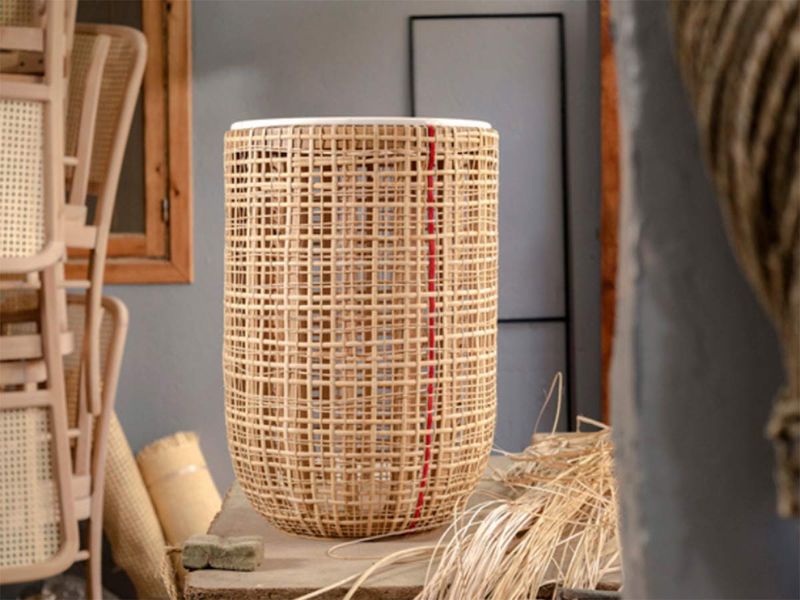
The Abroyan Factory, in the Bourj Hammoud neighbourhood, was once a flourishing textile factory that employed over 600 employees. Abandoned since the 1930s, the 14,000 square-meter space is being revived as a symbol of Lebanon’s industrious legacy, one that the nation’s craft community is eager to reclaim. Currently being used as an event and exhibition space, the hub hosted two installations focused on themes of sustainability and environmentally friendly design.
The first, ‘We Search’, was an open exhibition that explored the future of global design. Targeted to provide a younger generation of designers in Lebanon with the opportunity to showcase their work, and to foster dialogues on the possibilities of a sustainable future. Curated by international design experts Federica Sala, Anne-France Berthelon and François Leblanc Di Cicilia—in collaboration with five Lebanese universities, over 80 students and recent graduates were given the opportunity to showcase their design works using sustainable and recycled materials.
The second was the ‘Materials Exhibition’, curated to highlight Lebanon’s ability to produce sustainable materials and give their creators a platform to connect with B2B and B2C visitors ready to embrace eco-friendly solutions. It included a collective of innovators of sustainable materials already available in the country, in hopes of promoting their initiatives. Such as ‘OyaWay’ striving to improve watering of plants and crops using ‘oyas’ (pots) made of regionally sourced clay manufactured by Lebanese potters, ‘Post Industrial Crafts’ using recycled plastics for 3D-printed furniture and ‘Juzur’, who utilises sustainably-sourced wood and local wood-carvers from Tripoli for their designs.
Preservation Hub At Villa Audi
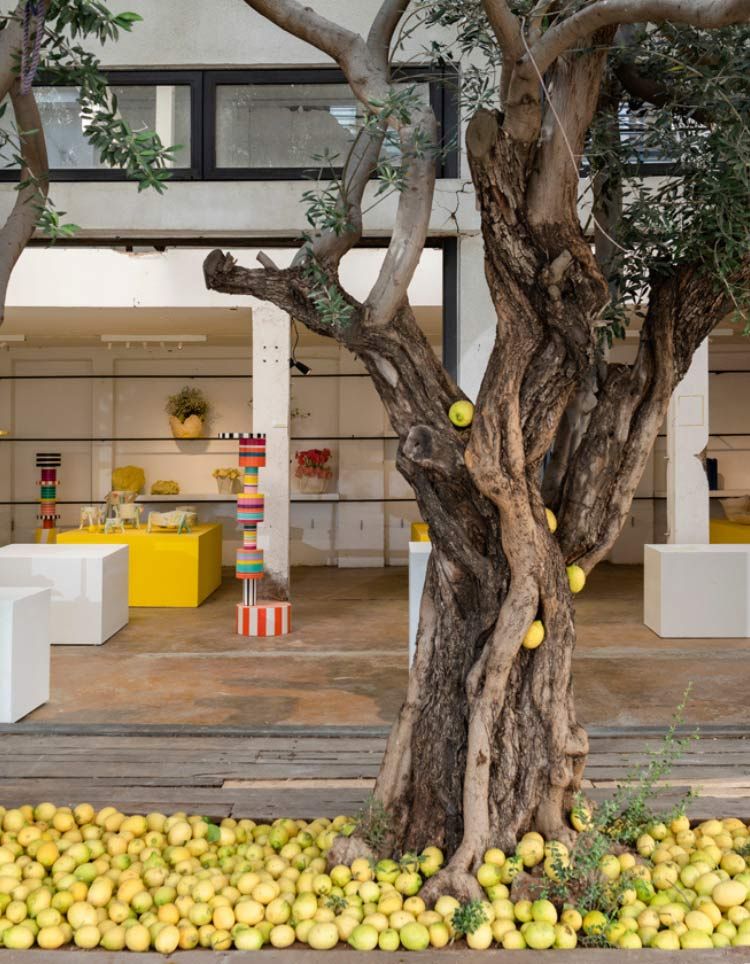
An icon of Beirut’s golden age and home to the Audi Foundation, Villa Audi is the perfect place to illustrate the third and final pillar of We Design Beirut, ‘Preservation’. The historically impressive villa and private museum of Phoenician and Byzantine mosaics—lovingly restored in recent years by Raymond Audi—has hosted a variety of events, from exhibitions and concerts, to film screenings, and seminars.
The venue hosted the headline exhibit for We Design Beirut, titled ‘Past Echoes—A Journey Through Middle Eastern Product Design’. A collective exhibition that merged the living history of Villa Audi with contemporary creations. Curated by Joy Mardini and William Wehbe, co-founders of Babylon-The Agency, this showcase featured works by the brightest names in Lebanese design, including Karen Chekerdjian, Nada Debs, Karina Sukar, Bokja, George Geara, Samer Bou Rjeily and Roula Salamoun, accompanied by pop-up installations from both local and international brands. From furniture pieces to utilitarian objects, the works of 36 regional product designers congregated within Villa Audi’s walls, echoing the region’s rich cultural heritage and craftsmanship.
“Through design, we bridge the temporal gap, fostering a profound connection with legacy while embracing the contemporary vision of today’s design,” says Mardini. “Platforms like We Design Beirut Week are essential, offering a unique opportunity to showcase creativity, preserve historical significance, and explore the interconnectedness of culture and identity through design.”
‘Forgotten Spaces’ And ‘Lab Story – A Retrospective’
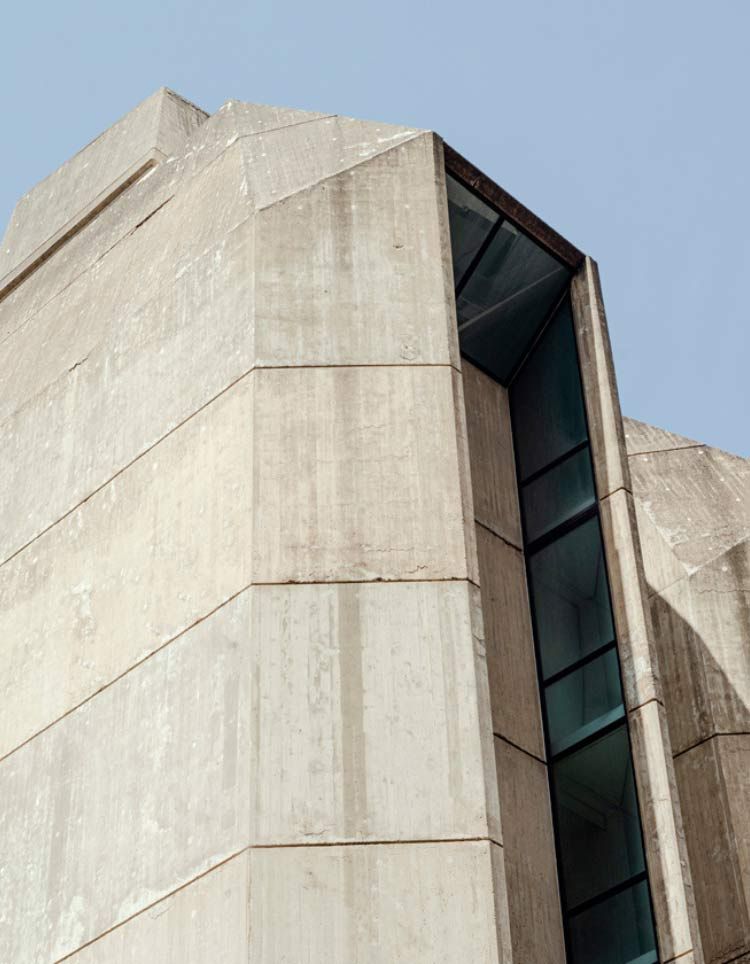
Third generation carpet gallery Iwan Maktabi transformed their flagship store in Beirut’s Achrafieh area into an experience that guided the visitor through different collections. The ground floor offered ‘Lab Story-A Retrospective’ from The Iwan Maktabi Lab, an enterprise that started five years ago and serves as a research hub for special projects, focusing on design influenced by culture, creativity, and craftsmanship.
The Lab aims to create sustainable and innovative designs, by merging technology and innovative materials with traditional weaving techniques and -other crafts. It invites creatives from diverse fields to contribute their vision to handcrafted designs, providing them with necessary tools and expertise. The retrospect featured collaborations with Saudi Artist Sultan bin Fahad, Emirati designers Sheikha and Afra Bin Dhaher, Lebanese designer Roula Salamoun amongst others. Viewers were able to experience the design process, admire various collaborations and collections that have shaped their path, and ways they continue to push the boundaries of weaving techniques.
Meanwhile, the underground floor featured the exhibition ‘Forgotten Spaces’ designed by Thomas Modeen, which explored the aesthetic potential of tapestry and carpets for overlooked horizontal and vertical areas of interior spaces, paying attention to corners, transitional spaces and doorways.
‘Swirlamania’ By Nada Debs
The eponymous brand run by Lebanese designer Nada Debs (hailed as one of the most influential women in contemporary design in the region), launched a new collection ‘Swirlmania’ for We Design Beirut at her Gemmayzeh studio, showing an assortment of over 20 handcrafted occasional tables, each painstakingly crafted using various artisanal techniques that have become synonymous with her design practice over the years. Contrasting solid blocks of colours with swirling strips of marquetry, the tables combined the region’s rich craft with contemporary minimalism.
Nada Debs is renowned for her ability to distil culture and craftsmanship to create pieces of emotional resonance. She states, “Beirut serves as a highly significant creative hub for the region—the cultural links between Europe and Lebanon and the Middle East greatly influence the designers in the city. We Design Beirut is a platform that showcases the interplay of craft, design and culture, highlighting this rich diversity—and I am happy to be involved.”
‘All Things Must(‘NT) Pass’: A Khalil Khouri Retrospective At The Interdesign Building
Set within Beirut’s iconic brutalist structure the Interdesign building; designed by the avant-garde modernist architect and furniture designer Khalil Khoury in 1973 and completed in 1996 to showcase the furniture he produced for international clients, ‘All Things Must(n’t) Pass’ is an homage to the late architect’s pioneering vision, curated by his son and grandson, Bernard and Teymour Khoury.
The uniquely designed building, intended as a showroom, was abandoned in the 1990s and this was the first time the public had been allowed access. Displayed across 24 plateaux of the building were historical documents, photographs, architectural drawings and models, artworks, furniture pieces and prototypes that were produced over a span of fifty years. The fascinating exhibition was a testament to one of Beirut’s most enduring creative minds, and offered a fascinating window into his design thinking.
Bernard Khoury claims, “This is not a retrospective. This is not an objective account of the history of our territory. This is our story of our father and his passion for aeronautic engineering, flying, painting, hunting, politics, industrial desig n, architecture, birds and the female figure”.




